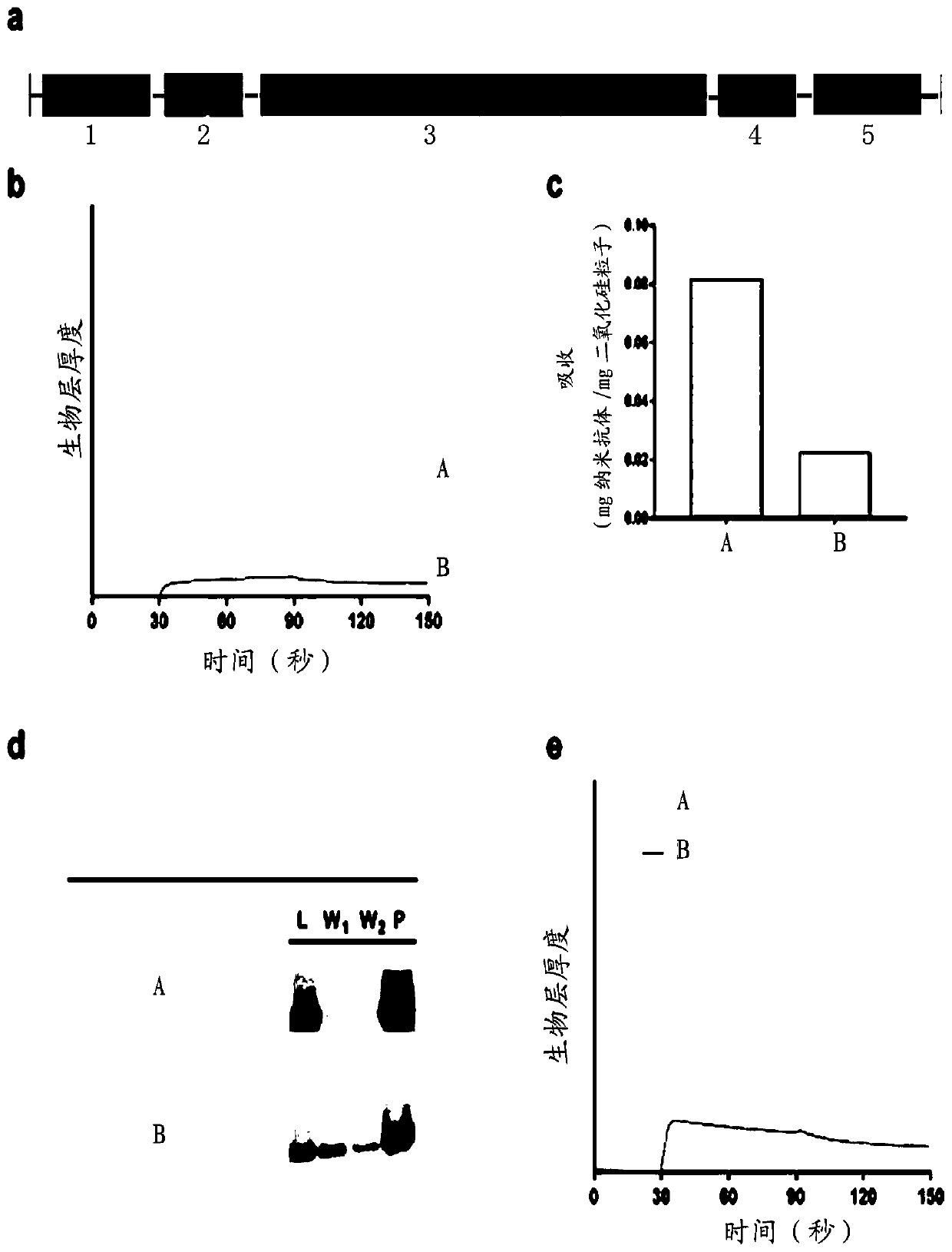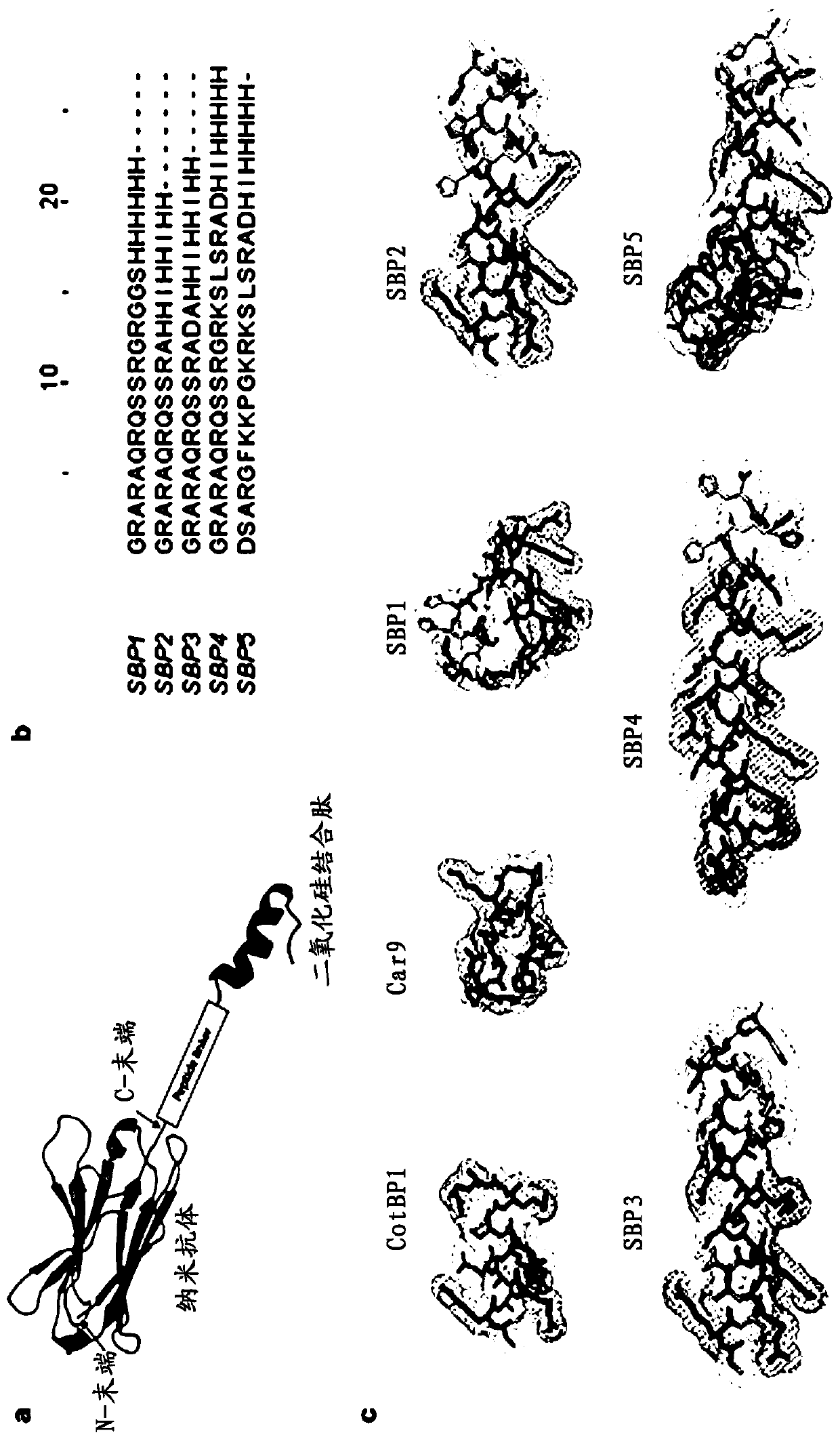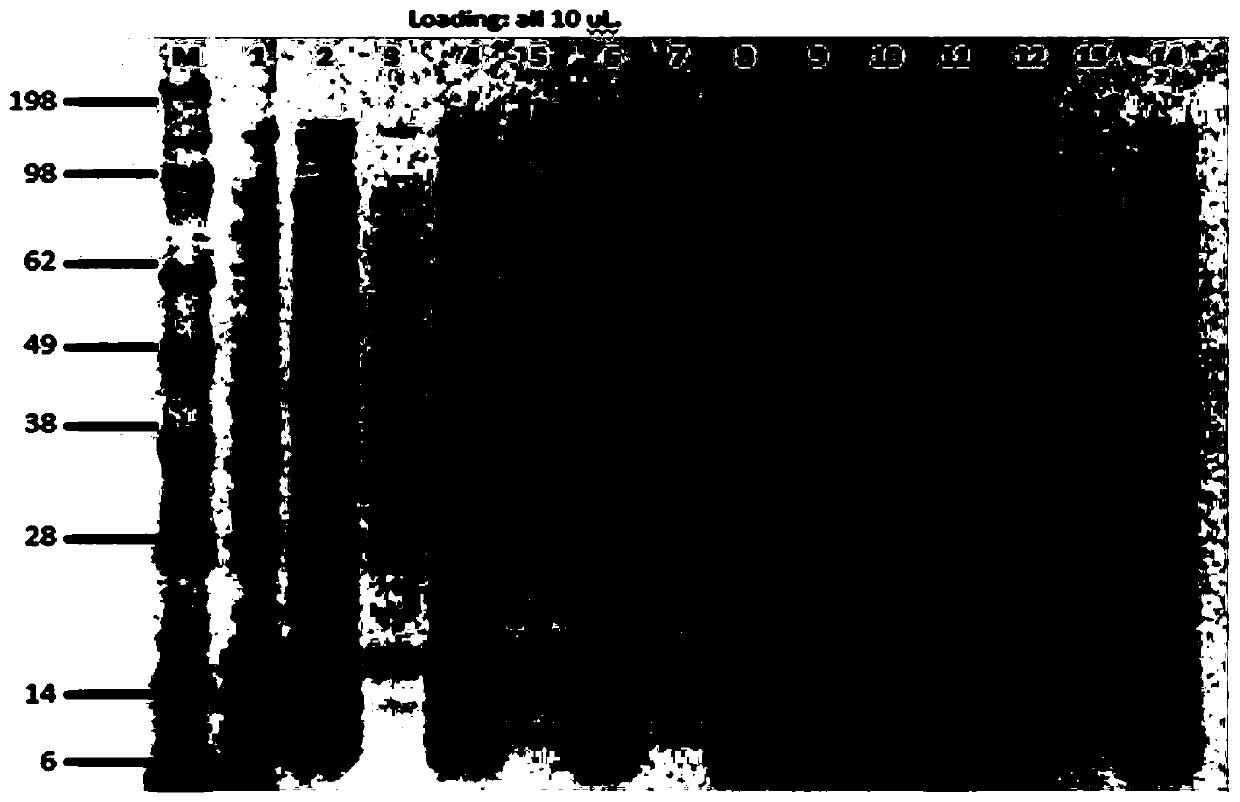Polypeptide for protein surface immobilization and application thereof
A fusion protein and silica technology, applied in the protein field, can solve the problems of damage to the protein, increase the time and cost of the immobilization process, and not site-specific binding, etc., to achieve the effect of increasing affinity, improving possibility, and optimizing function
- Summary
- Abstract
- Description
- Claims
- Application Information
AI Technical Summary
Problems solved by technology
Method used
Image
Examples
Embodiment 1 2
[0055] Example 1 Preparation of silica-bound peptide anti-CEA nanobody fusion protein
[0056] 1. Construction of Silica-Conjugated Peptide Anti-CEA Nanobody Fusion Protein
[0057] The silica-binding peptide was reconstituted into an anti-CEA heavy chain antibody (clone no. 2D5, 11C12) isolated from an immunized llama following the procedure described in WO 94 / 25591. For information about the 2D5 heavy chain antibody, please refer to Chinese patent application CN201711358747.4). For information about the 11C12 heavy chain antibody, please refer to Chinese patent application CN201710120052.6. The sequence of the silica-binding peptide is shown in SEQ ID NO.9-13, and the present invention names it SBP1-5. In addition, the present invention also uses the silica-binding peptide CotB1P from the prior art (Abdelhamid, M.A., Motomura , K., Ikeda, T., Ishida, T., Hirota, R., & Kuroda, A. (2014). Affinity purification of recombinant proteins using a novel silica-binding peptide as a...
Embodiment 2
[0084] Example 2 Binding Kinetics Determination of Tailed Antibody Fragments Interacting with Quartz Surfaces
[0085] A new type of biosensor (FORTEBIO) was placed in a 70°C water bath oxidation solution (H 2 o 2 , a mixture of water and ammonia) for 30 minutes, and washed with ultrapure water to prepare a quartz surface. The prepared quartz sensor was used to measure the binding kinetics with a BLItz biolayer interferometer (FORTEBIO).
[0086] The specific determination steps of binding kinetics:
[0087] The binding kinetics of the silicon-based bound Nanobody constructs were determined using biolayer interferometry (BLItz (FORTEBIO)). Oxidize the liquid at 70°C (H 2 O2, water, ammonia (mixed 1:3:1) were incubated in a water bath for 30 minutes to prepare the silicon-based surface at the end of the quartz biosensor, and then washed with MilliQ water. Quartz biosensors were stored in 20 v / v % ethanol and pre-equilibrated in PBS for 10 minutes before use. Unless otherw...
Embodiment 3
[0093] Silica immobilization of the anti-CEA heavy chain antibody of embodiment 3
[0094] Silica nanoparticles and microspheres were ultrasonically dispersed in PBS for 5 minutes (Qsonica Q125). Add purified heavy chain antibodies to dispersed silica nanoparticles or microspheres. After a short vortex, incubate at room temperature for 30 minutes. The mixture was then centrifuged at 14800 rpm for 5 minutes to separate the particles. Wash twice with PBS and collect the supernatant from each washing step. The heavy chain antibodies immobilized in the particles or supernatant were quantified by SDS-PAGE and absorbance at 280nm.
[0095] Published silica-binding peptides (such as CotB1p, supra) have failed to identify polyhistidine as a key residue that enhances silica-binding affinity by forming hydrogen bonds with surface silanols. In the present invention, at least one histidine is added to promote hydrogen bond formation. The dissociation constant of one of the preferred po...
PUM
| Property | Measurement | Unit |
|---|---|---|
| Particle size | aaaaa | aaaaa |
| Aperture | aaaaa | aaaaa |
Abstract
Description
Claims
Application Information
 Login to View More
Login to View More - R&D
- Intellectual Property
- Life Sciences
- Materials
- Tech Scout
- Unparalleled Data Quality
- Higher Quality Content
- 60% Fewer Hallucinations
Browse by: Latest US Patents, China's latest patents, Technical Efficacy Thesaurus, Application Domain, Technology Topic, Popular Technical Reports.
© 2025 PatSnap. All rights reserved.Legal|Privacy policy|Modern Slavery Act Transparency Statement|Sitemap|About US| Contact US: help@patsnap.com



